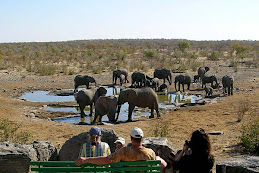Monday, May 11, 2009
News Blog
These shallow pans have no real river beds. As unusually heavy seasonal rains hit Namibia and neighbouring Angola earlier this year, the waters silently filled the oshanas.Once they were full, even more rain connected the oshanas to form vast shallow lakes stretching for kilometres and taking months to dry up.At least 102 people have died since January in the worst flooding since 1972, which has affected 600,000 people across northern Namibia.
Friday, May 8, 2009
Creative Writing Blog
Etosha’s silvery pan and surrounding plains in the north of the country teem with game, making

